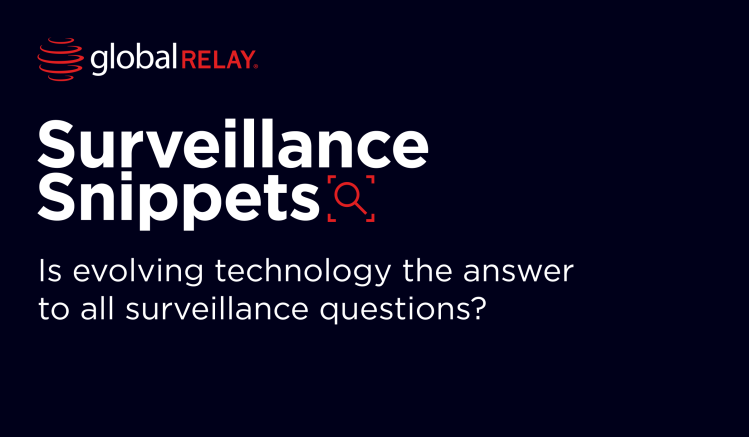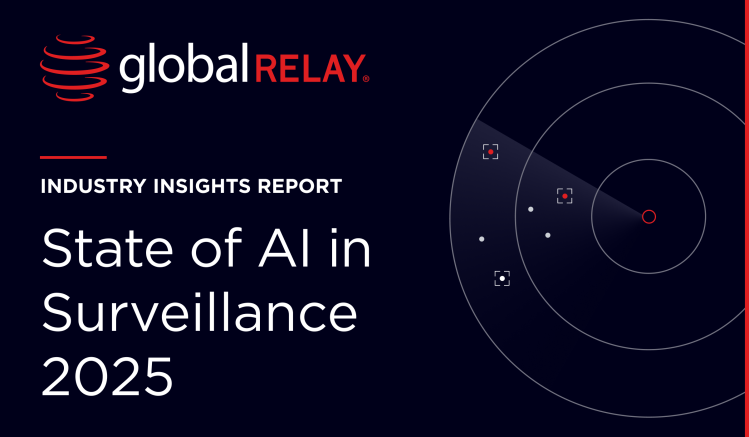In the span of decades, life as we know it has been radically altered by technological evolution. What were once landlines turned to smartphones, paperwork to electronic documents, cable to streaming, and printed maps to GPS. Tech developments seem to emerge faster and faster with each passing year, leaving the world in a constant state of transformation.
It seems that society has been primed to adapt to technological innovations that optimize daily life, though change doesn’t happen overnight. One such change that the financial landscape is still adjusting to because of rapid digitalization is the proliferation of communications data, which firms are expected to capture, store, and monitor.
Regulators have been steadily tightening recordkeeping and supervision requirements over the past years to maintain control over financial operations and ensure market integrity. Though, regulatory enforcements have shown that firms’ data completeness and surveillance governance has not yet matched the pace of modernization. To maintain compliance with regulatory expectations and aptly manage risk, it’s essential for firms to implement scalable and future-proof technological systems.
Compliance culprit, noncompliance cure-all
The ease with which teams can connect with colleagues and clients is evidently advantageous, though this means firms must make changes to internal systems to capture and monitor the growth of popular communications channels. We’ve seen firms fined time and again for off-channel comms violations, due to a failure to “reasonably supervise” personnel. Likewise, firms are being fined for gaps in surveillance data.
To keep on top of emerging communication channels, firms must first know where all conversations are being had – from traditional platforms through to niche chats. They must then transform their compliance systems to properly capture all communications on these platforms and invest in surveillance technologies that can accurately flag misbehavior. Without monitoring solutions that can keep communications data aligned, firms aren’t easily able to parse through and analyze information, leaving themselves more susceptible to undetected risk.
While technological advances have brought about improvements, they have also presented teams with prominent risks, such as the increased frequency of cybersecurity incidents. In one example, public cloud provider Oracle faced a significant breach, a hacker was able to access Oracle’s system to steal personally identifiable information through a legacy technology system. FINRA issued a warning to firms that their data could be “vulnerable”.
Just a couple of weeks later, a U.S. government agency – the Office of the Comptroller of the Currency (OCC) – experienced a major information security incident in which a hacker was able to access more than 100 email accounts including highly sensitive information related to financial firms.
These instances not only brought into question the security of public cloud vendors, but also the importance of implementing future-proof technology. Should these organizations have had enhanced surveillance solutions with robust data security measures in place, would these incidents still have occurred?
Smarter surveillance with advanced tech
Enhanced surveillance technology presents substantial benefits that help firms shift from reactive monitoring to proactive monitoring. Evidently, advanced technology including artificial intelligence (AI) and generative AI allows firms to improve response time. Instead of having to dedicate copious time and resources to analyzing data, firms can automate the detection and review of risk flags at a much quicker pace.
AI-enabled surveillance models also enable firms to better organize data so that it’s easier to narrow in on real risks. For example, by having a platform that can build whitelists that identify risk populations, surveillance teams are more readily able to streamline monitoring efforts. Advanced tech solutions also assist in recognizing disguised risk within communications datasets by analyzing content, and not just looking at key words or sentences.
Evolving technology, evolving oversight
Regulators have aimed to adapt to the speed of technology by adjusting regulations and policies. In September 2023, Commodity Futures Trading Commission (CFTC) Commissioner Christy Goldsmith Romero spoke to the evolution of technologies like AI, emphasizing its ability to improve protections within the industry:
“It’s time for a new approach to protect investors. One where regulators keep pace with technology [and] put the latest technological advances in our tool belt.”
We’ve seen shifting regulatory views on AI from other regulators as well. The Securities and Exchange Commission (SEC) had previously committed to utilizing “responsible AI” to explore generative models, though new regulatory leadership has seen U.S. regulators approach AI innovation more rapidly.
While it’s crucial to maintain governance frameworks that can detail the use of AI models within surveillance workflows, it’s clear that regulators see the role that generative technology plays in augmenting financial operations. Former SEC Chair Gary Gensler said in a speech on AI technology:
“As machines take on pattern recognition…this can create great efficiencies across the economy. In finance, there are potential benefits of greater financial inclusion and enhanced user experience.”
In Global Relay’s State of AI in Surveillance 2025 report, the top two benefits that teams hope to gain by utilizing AI technologies are reducing false positives and improving risk identification. These are capabilities that AI-enabled surveillance systems specifically target by analyzing complete communications as opposed to prescribed keywords.
Data capture crossovers
There’s also a point to be made about the symbiosis of recordkeeping and surveillance teams to maintain a “golden copy” of data. These teams can often operate independently within firms and utilize different platforms to perform their roles. Despite the critical intersectionality of both departments, the separation of technology to perform communications monitoring and data capture tasks can perpetuate data gaps that lead to operational disruptions and regulatory repercussions.
To manage data completeness and effective supervision of communications, surveillance, and recordkeeping teams would benefit from working in tandem. By using a single integrated solution as opposed to several fragmented legacy solutions, both teams can jointly streamline innovation.
Complete communications data control
Implementing evolving technologies into compliance and surveillance workflows isn’t just an added benefit – it’s becoming essential. Exponential data generation necessitates enhanced capture and monitoring solutions that can appropriately collate data, and firms require the ability to increase accuracy, bridge data gaps, and future-proof their operations.
By investing in technological solutions that can capture data from all communications channels and structure it for enhanced supervision, firms can lead with an integrated and proactive approach to compliance to keep on top of the compliance game.




